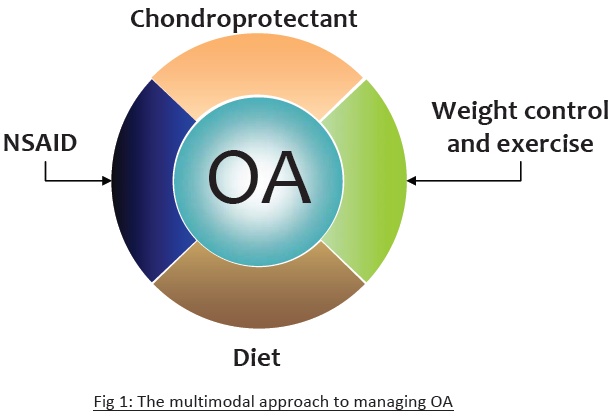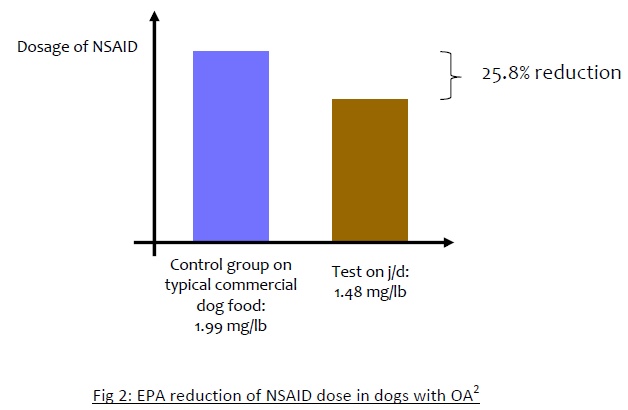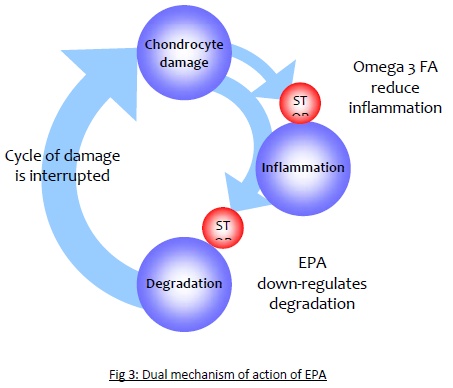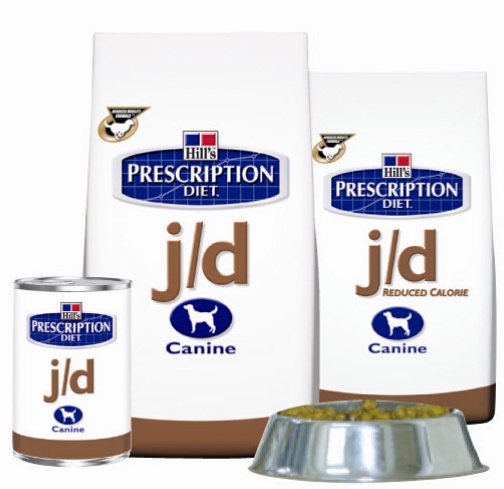New Thinking on Osteoarthritis
Adrian Pratt BVSc MRCVS - 28/08/2010
The Pain Paradigm: New Thinking on Osteoarthritis
How well does your practice manage osteoarthritis? Do you have programmes that adequately address the chronicity of the disease? Do you actively manage quality of life and assess the behavioural status of the animal, or is there a tendency to passively manage a downwards spiral? Are you maximising all short to medium term opportunities to manage the disease?
Structured Approach
It’s clear that radiographical and pathological evidence do not always reflect the degree to which the patient experiences pain due to OA and many experts now feel that pain management should be absolutely central to managing OA. It sounds obvious but it has been suggested that many dogs with OA are in a chronic state of pain. This can be hard to identify and control, compared to an acute pain process, particularly given the time frame over which a patient can adapt their behaviour to mask signs and develop coping strategies, such as immobility or withdrawal. Orthopaedics specialist Stuart Carmichael is an advocate for the multimodal approach that targets a number of different interventions simultaneously1. The ABCDE 5‐point plan he advocates looks at domains for interventions rather than specific treatments:
A - Analgesia (NSAIDS, Adjuncts, Surgery)
B - Bodyweight and Diet (Obesity control, EPA Diets)
C - Compliance/ control (Toxicity monitoring, Practical changes)
D - Disease (Chondroprotection)
E - Exercise (Physical rehabilitation)
A is for Analgesia
Although pain management is the real key to managing OA, many clinicians want to limit the amount of medication they give on a long term basis, even to their own pets: Clare Spencer from Vets in the Park Tewkesbury had this to say, "My 11 year old Border Terrier, Georgia, was starting to have problems coping with long distance hikes and often had very stiff shoulders, especially first thing in the morning. Her x‐rays showed evidence of early osteoarthritis but like many vets and pet owners alike, I was keen to avoid long‐term medication for as long as possible due to the risk of side effects. I decided to trial j/d reduced calorie and, for simplicity, to feed it to both dogs. Georgia's daughter, Indy, is 8 years old, prone to easy weight gain and shows early indications of following in her mothers' footsteps as far as her shoulders are concerned. Rather like the car mechanic’s car, I then neglected to review and compare their joint pain and exercise tolerance and just continued with the same food. Suffice to say, the bottle of non‐steroidal medication for acute flare ups is going dusty in the medicine cupboard and we no longer have to plan our walks around what the dogs can cope with."
Given that we are often dealing with elderly or compromised patients the aim is usually to administer the minimal effective dose. Recent studies published in the Journal of the American Veterinary Medicine Association (JAVMA) demonstrate that Hill’s™ Prescription Diet™ j/d™ Canine omega‐3 enriched food can help reduce the dose of NSAIDs by up to 25 per cent, when fed to dogs with osteoarthritis2.

B is for Body weight and Diet
Previous studies have identified that weight loss can result in improvements in mobility in overweight dogs with OA. A study published in May this year quantified this demonstrating a noticeable improvement may be seen after modest weight loss in the region of 6.10 – 8.85% body weight3. j/d Reduced Calorie can make a significant contribution to the long term management of overweight OA patients.
C is for compliance and control
We all want clients to have positive experiences of the treatments we recommend. If transitioning and compliance with a dietary recommendation is a concern then let’s take on board what Professor of Feline Medicine Danielle Gunn - Moore has to say of her experiences with j/d:
"I have been amazed at how effective a diet specifically supplemented to help reduce the signs of arthritis in cats can be. Even though the cats are usually elderly they happily change onto this diet and complain bitterly if it runs out. A real bonus is that the same supplements also help reduce the clinical signs of senility. Since these two conditions are so common in our elderly cats this type of diet can make a real difference to the health and welfare of these precious individuals."
D is for Disease
Chondroprotection has become the Holy Grail of OA treatment. It is well accepted that progression is inevitable in osteoarthritis. Can that progression ever be slowed? The benefits of an EPA enriched diet are not just confined to a reduction in inflammation. Recent studies demonstrate that in dogs the high levels of EPA* from fish oils can down‐regulate the cartilage degrading enzyme aggrecanase1. In vitro studies have also identified that EPA resulted in a reduction in the amount of degraded cartilage residue produced4.

E is for Exercise
Physical rehabilitation techniques are so important in managing OA, not just to strengthen supporting tissues and muscles but also for pain reduction through conditioning. Clinical evidence on veterinary physiotherapy is beginning to emerge and bring with it a new perspective on what should be done or recommended.
So why are more practices not adopting the multimodal approach?
Not being clear about the aims of the programme can present a barrier: the goal should be to have a cat or dog that is behaviourally normal, that may be limping due to functional lameness but is actually pain-free. This can be a difficult concept to explain to clients but a candid discussion at the start of treatment that manages expectations, goes some way to resolving this issue.
Having a multitude of modalities available can also be confusing, until we consider that this multiplicity may be absolutely necessary to manage the disease and even concurrent problems elderly patients may experience. For some it’s a crisis of confidence and lack of clinical proof for some modalities can raise doubts – j/d remains the only arthritis diet for cats and dogs that is backed by clinical proof. Yet the rewards of a multimodal approach can be significant.
"I was delighted when Hill's informed me of the launch of j/d, because working in Surrey, I see a lot of Labs, Retrievers and German Shepherds developing osteoarthritis. Discovering that I could use a diet which worked at a genomic level to help treat my patients was great. I've had so many positive testimonials from happy clients with happy dogs and this knowledge, combined with my own experience has made me very confident to prescribe j/d for dogs with arthritis as well as for those dogs that might be prone. And now, with Feline j/d, I trialed it on one of my three cats who had stopped jumping up and who had developed a very matted coat. The result has been fantastic and now she and her sister are both fed j/d exclusively." Jamie Crittall BVSc MRCVS , Beech House Veterinary Centre.
We'd like to end this article with a heart-warming story that came to us from Gemma White Bsc Hons RVN. Gemma reminds us all that our patients are much loved pets and their wellbeing means the world to their owners. Clients expect to be offered gold standard treatments and do not want their pets to be suffering the effects of chronic pain. Your patients deserve to benefit from a wide range of positive interventions. We just have to point out that Eric is in fact a domestic short hair.
"My Eric had a bad start in life and as an un-neutered handsome young man he was hit by a car and suffered a fractured pelvis and hind leg. Weeks of love and a few operations later, Eric recovered in rehabilitation at my house - yes we fell in love and he came to live with me. Time soon flew by and before I knew it Eric had grown quiet: he began sleeping for most of the day and would sit hunched in the sunshine often on his own, with a sour look on his face. He had become an old man...until I changed his food to Hills Feline j/d. Eric is now my loving young boy again. As summer comes he is rarely inside and is usually to be found leaping in the garden, chasing leaves and feathers floating in the breeze, running up and down the lawn, climbing the fence and sitting on his favorite look out post. Hills Feline j/d has brought my Eric back to life."
This article was provided by Hill'sTM makers of j/dTM and j/d Reduced CalorieTM:

References:
1. Carmichael S. Understanding OA Management in Dogs. Proceedings of the SEVC Conference 2009.
2. Fritsch A, Allen T, Dodd C. A multicenter study of the effect of a therapeutic food supplemented with fish oil omega-3 fatty acids on the Carprofen dosage in dogs with osteoarthritis. J. Am. Vet. Med. 2010; 236 (5): 535-539.
3. Marshall W G, Hazewinkel HAW, Mullen D, et al. The effect of weight loss on lameness in obese dogs with osteoarthritis. Vet Res Commun. 2010 March; 34(3): 241–253.
4. Caterson B, Cramp J, Little C B et al. Eicosapentaenoate supplementation abrogates canine articular cartilage degeneration in in vitro explant culture systems. Hills European Symposium on osteoarthritis and joint health 2005; 14-19.

